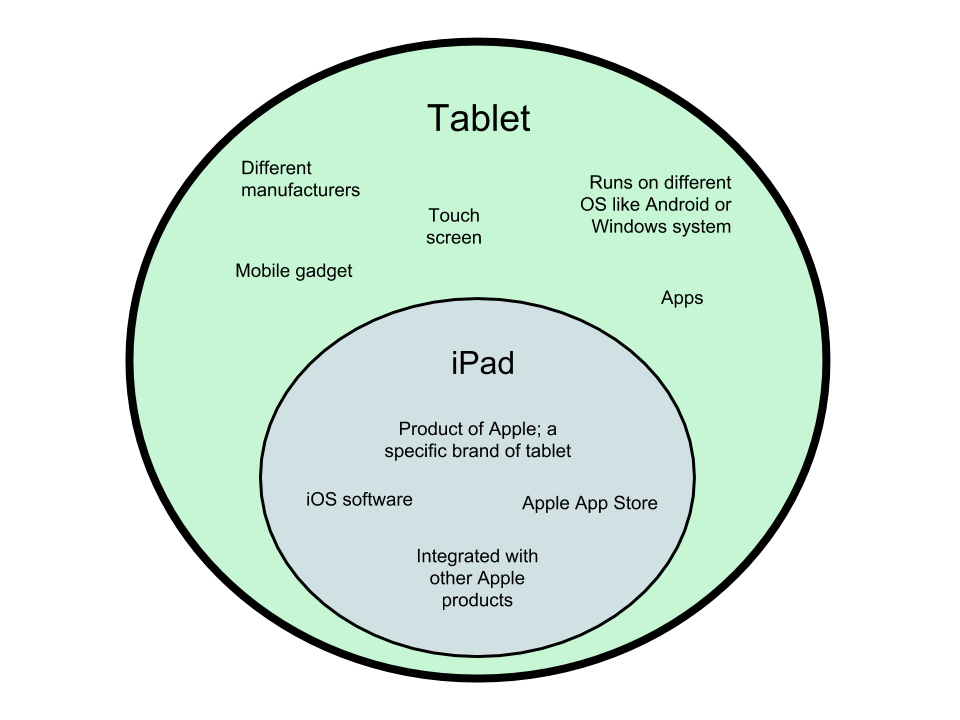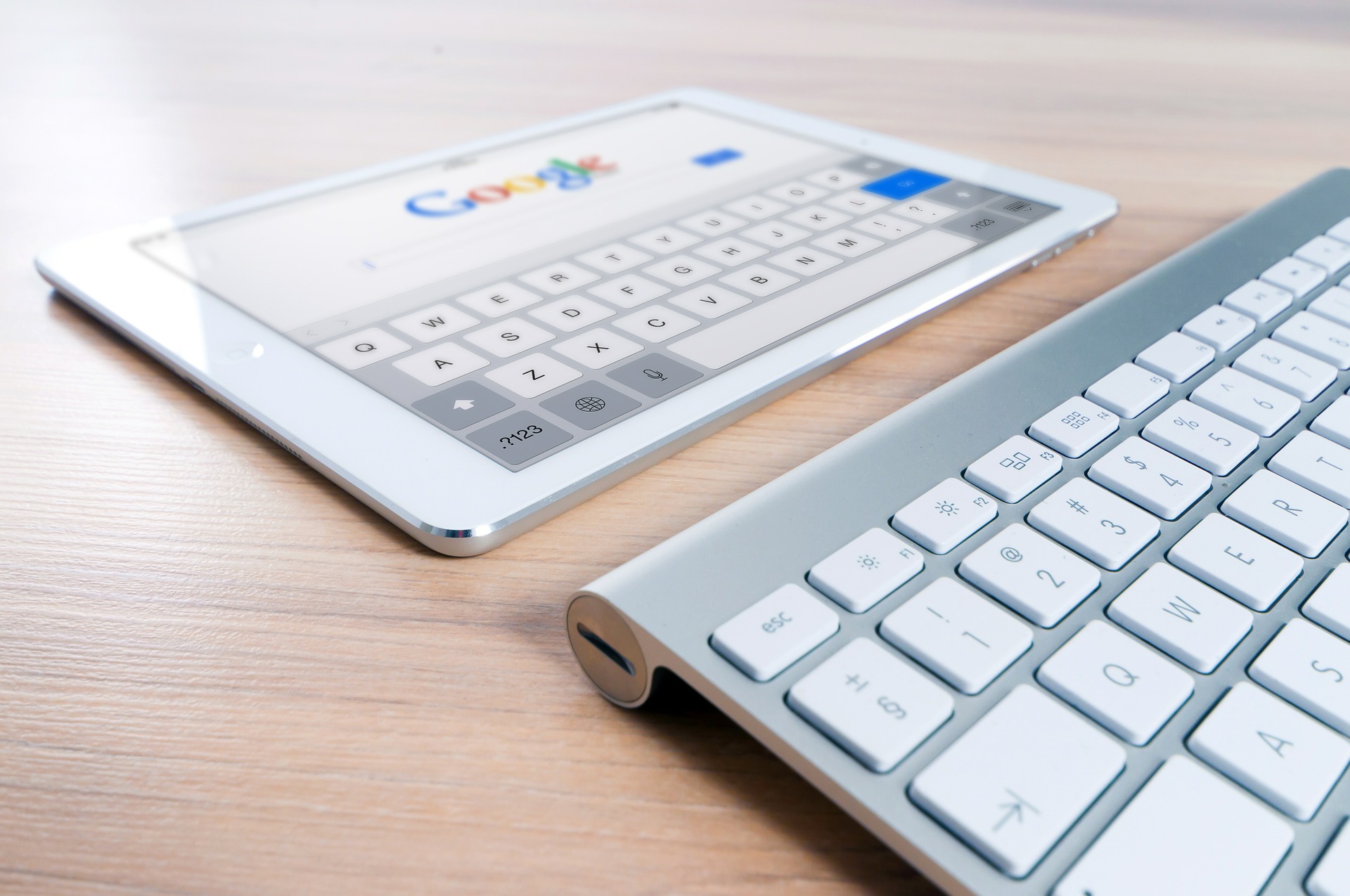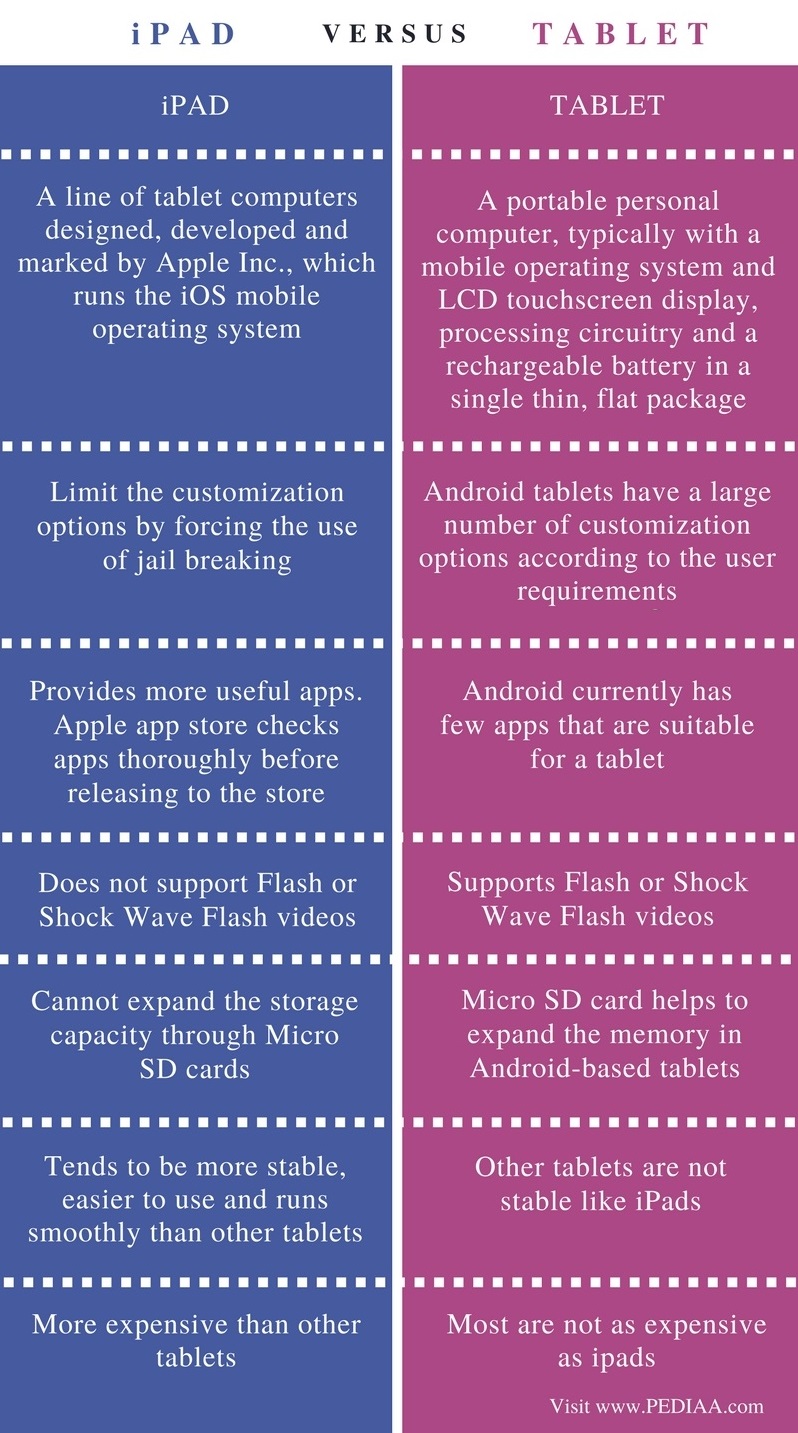Are you confused about the differences between an iPad and a tablet? You're not alone. Many people wonder what sets Apple's iPad apart from other tablets on the market. Understanding the distinctions can help you make an informed decision when choosing a device that best suits your needs.
In today's digital age, tablets have become essential tools for productivity, entertainment, and communication. While the term "tablet" refers to a broad category of devices, the iPad has carved out its own niche with unique features and ecosystem advantages. This guide will explore the key differences between iPads and other tablets, helping you understand why the iPad stands out.
Whether you're a student, professional, or casual user, this article will provide you with detailed insights into the iPad's advantages and how it compares to other tablets. Let's dive in and uncover the differences that matter most!
Read also:Michigan State Tax Rate A Comprehensive Guide For Residents And Businesses
Table of Contents:
- Understanding the iPad and Tablets
- Hardware Differences Between iPad & Tablets
- Operating System: iOS vs Android
- App Ecosystem: App Store vs Google Play
- Performance Comparison
- Design and Build Quality
- Accessories and Compatibility
- Pricing and Value for Money
- Longevity and Software Updates
- Conclusion
Understanding the iPad and Tablets
Before diving into the specifics, it's important to understand what defines an iPad and a tablet. A tablet is a portable computing device that typically features a touchscreen interface and is designed for convenience and portability. The iPad, on the other hand, is Apple's flagship tablet, offering a refined experience within the Apple ecosystem.
One of the key differences is the brand identity. While tablets come from various manufacturers like Samsung, Lenovo, and Microsoft, the iPad is exclusively produced by Apple. This exclusivity ensures a consistent user experience and tight integration with other Apple products.
The iPad has been a pioneer in the tablet industry since its launch in 2010. It has consistently set benchmarks for performance, design, and usability, making it a top choice for millions of users worldwide.
Hardware Differences Between iPad & Tablets
Display Quality
One of the standout features of the iPad is its exceptional display quality. iPads typically come with Retina displays, offering sharp visuals and vibrant colors. Most Android tablets, while improving, often lag behind in terms of display clarity and brightness.
- iPad: Retina display with high resolution and True Tone technology.
- Tablets: Varying display qualities depending on the manufacturer and price range.
Battery Life
Battery life is another critical factor. iPads are known for their long-lasting batteries, often providing up to 10 hours of usage on a single charge. Many Android tablets, especially budget models, struggle to match this endurance.
Read also:Comprehensive Guide To Eye Care Center Piscataway Your Path To Healthy Vision
However, premium tablets like the Samsung Galaxy Tab series have made significant improvements in battery technology, narrowing the gap with iPads.
Operating System: iOS vs Android
The operating system is where iPads truly differentiate themselves. Running on iOS, iPads benefit from Apple's streamlined and secure software environment. Android, on the other hand, offers more customization options but can be less consistent across devices.
Key differences include:
- iOS: Regular updates, seamless integration with Apple services, and a focus on user privacy.
- Android: Greater flexibility, support for third-party apps, and a wider range of devices.
App Ecosystem: App Store vs Google Play
When it comes to apps, the iPad's App Store boasts a vast library of high-quality applications optimized for the iPad's large screen. Developers often prioritize creating apps for the iPad due to its popularity and user base.
Google Play, while equally extensive, sometimes suffers from inconsistent app quality and optimization across different tablet models. However, Android's open-source nature allows for more experimental apps and greater freedom for users.
Performance Comparison
Processor Power
iPads are powered by Apple's proprietary A-series chips, which deliver exceptional performance and efficiency. These processors are often more advanced than those found in competing tablets, ensuring smooth multitasking and gaming experiences.
RAM and Storage
Both iPads and Android tablets offer varying amounts of RAM and storage options. However, iPads tend to have better optimization, allowing them to perform well even with lower RAM specifications compared to some Android tablets.
Data from Apple's official website highlights the superior performance of iPads in benchmark tests.
Design and Build Quality
Apple is renowned for its sleek and premium designs, and the iPad is no exception. Featuring aluminum unibody construction and minimalist aesthetics, iPads exude elegance and durability. Many Android tablets, especially budget models, use plastic materials, which can feel less premium.
That said, high-end tablets like the Samsung Galaxy Tab S series have made strides in design, offering metal finishes and slim profiles that rival the iPad.
Accessories and Compatibility
Apple Pencil and Keyboard
One of the iPad's standout features is its compatibility with the Apple Pencil and Magic Keyboard. These accessories enhance productivity and creativity, making the iPad a versatile tool for work and play.
While some Android tablets offer stylus support, the experience is not as refined as with the Apple Pencil. Similarly, keyboard compatibility varies across Android devices, with limited options for seamless integration.
Pricing and Value for Money
Price is a significant factor for many buyers. iPads are generally more expensive than their Android counterparts, especially at the entry level. However, the premium price is often justified by the superior build quality, performance, and ecosystem benefits.
For those on a budget, Android tablets offer more affordable options without compromising too much on functionality. It's essential to weigh your needs and budget before making a decision.
Longevity and Software Updates
One area where iPads excel is longevity. Apple provides software updates for its devices for up to five years or more, ensuring that older iPads remain relevant and secure. In contrast, Android tablets often receive updates for a shorter period, depending on the manufacturer.
This extended support is crucial for users who want to avoid frequent upgrades and maintain a reliable device over time.
Conclusion
Understanding the differences between iPads and tablets can empower you to make an informed decision. While iPads offer superior performance, design, and ecosystem integration, Android tablets provide more flexibility and affordability. Your choice should align with your specific needs, budget, and preferences.
We encourage you to share your thoughts and experiences in the comments below. If you found this article helpful, please consider sharing it with others. For more insights into technology and gadgets, explore our other articles on the site.
Disclaimer: The information provided in this article is based on publicly available data and industry trends. Always verify specifications and features with the manufacturer or authorized retailer before making a purchase.


/001_what-is-the-difference-between-ipad-and-tablet-060a4ba5f2a3403694ae6b1d36d46361.jpg)
